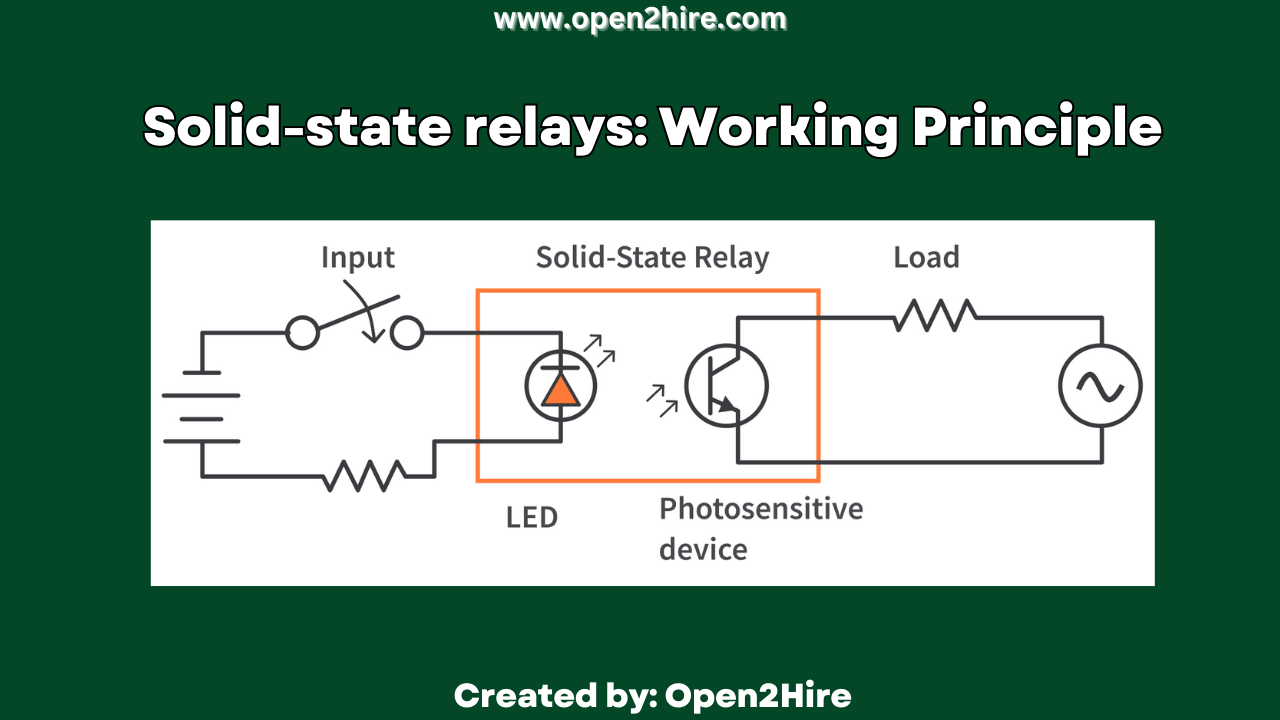
Solid-State Relays: Working Principle
Solid-state relays: Working Principle
What is Solid-state relays?
Solid-state relays (SSRs) are a type of electronic switching device that uses semiconductor components instead of traditional mechanical contacts to switch electrical loads on and off. They operate by using an input signal (usually a low-voltage control signal) to activate an optoelectronic component (such as an LED) which then triggers a solid-state switching device (such as a thyristor or triac) to turn on or off the load circuit.
Related: Generator Protection Application Guide
SSRs offer several advantages over traditional electromechanical relays, including faster switching speeds, longer lifespan, reduced power consumption, and higher reliability. They are commonly used in applications where high switching frequency, low noise, and minimal maintenance are desired, such as in industrial control systems, process automation, and power electronics.
Working Principle of Solid-state relays
Solid-state relays (SSRs) are electronic devices that are used to switch electrical loads without using any mechanical parts. Here are the working principles of solid-state relays:
Input Circuit: The input circuit of a solid-state relay consists of an LED or a similar light-emitting diode. The LED is connected to the control circuit and when a voltage is applied to the LED, it emits light.
Photo-Optical Isolator: The light emitted by the LED is directed towards a photo-optical isolator. The photo-optical isolator is an optical device that isolates the input circuit from the output circuit.
Output Circuit: The output circuit of a solid-state relay consists of a semiconductor switching device, such as a thyristor or triac. When the LED emits light, it triggers the semiconductor switching device, which turns on the output circuit.
Load Circuit: The load circuit is connected to the output circuit of the solid-state relay. When the output circuit is turned on, the load circuit is energized, and the electrical load connected to it is switched on.
Control Circuit: The control circuit is responsible for controlling the input circuit of the solid-state relay. It can be used to turn on or off the solid-state relay based on the needs of the application.
Overall, the working principle of solid-state relays is based on the control of electrical signals using light signals. This eliminates the need for mechanical parts, making solid-state relays more reliable, faster, and longer-lasting compared to electromechanical relays.
Diploma in Electrical (Khulna)
11moGood job
Sales Associate at American Airlines
12moGreat opportunity
--
12moPositivo.